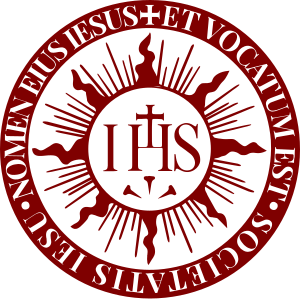Father Myron Pereira SJ
International
July 30, 2013
Why were the Jesuits suppressed?
July 21 2013 marked a sad anniversary in the history of the Society of Jesus, more commonly known as the Jesuits.
In 1773, they were suppressed across the world by Pope Clement XIV. Happily, 41 years later, another pope Pius VII undid the suppression, and ‘restored’ the Jesuits. This year and next year, Jesuits worldwide will commemorate these two anniversaries, and try to delve into their deeper meanings.
Ever since Ignatius Loyola founded the Society in 1540 at the height of the Reformation, his ‘company’ committed itself publicly to defend the pope, pledged to go wherever he sent them.
While all this looks beautiful on paper, the reality was a little more complex.
All through the 16th century and even earlier, one of the big scandals of the Church was the profligate lifestyle of the Roman pontiffs, and their obsession with power and control. The pope saw himself as the spiritual and political head of Western Christendom, and demanded total obedience. (Since the Jesuits defined themselves by their loyalty to him, no wonder they were jeered as ‘papists’!)
In the first two centuries of their existence (1540-1773), the Jesuits were very much part of the institutional Church and shared in that Church’s power and grandeur. But they also received much hostility from the Church’s enemies.
In actual fact, the Roman papacy was resented not just by the Protestant reformers, but even by Catholic princes eager for independent nationhood.
For Europe was rapidly fragmenting into smaller nation states, based on ethnicity and religion. The ‘old religion’ was seen as a throwback to papal taxation, feudalism and superstition, while the ‘reformed faith’ stood for education, progress and self determination.
A hundred years after their foundation, the Jesuits were influential in every court in Catholic Europe. They were confessors to the king, his confidential advisers. Their books and catechisms were read everywhere. Their preaching and spiritual teaching had changed the face of popular religiosity. Their schools introduced the young to the humanities and the new sciences, and trained them in opera and theater.
The newly discovered regions of Asia and the Americas offered even greater opportunities for innovation. In Brazil, Paraguay and Argentina, the Jesuits set up enclaves (‘reductions’) where the native peoples could live in security and autonomy, away from the aggression of European colonialists. This the Spanish and Portuguese governments bitterly resented.
In China, Jesuit missionaries had the ear of the emperor, and strove to reinterpret Catholic doctrine to an ancient and sophisticated culture (‘the Chinese Rites’). In India, they attempted unsuccessfully to convert the Mughal emperor himself. Scholars like DeNobili made inroads into Hindu philosophy and theology (‘the Malabar Rites’) trying to adapt Christian doctrine to the patterns of another civilization.
These were pioneering efforts indeed, but alas, they did not always agree with Roman sensibility and practice. Jesuit innovations, made with the best of intentions and the greatest skills, ran foul of the Vatican’s obsession with control and homogeneity. It wasn’t enough to become Christian, one had to become Roman Catholic.
The Chinese Rites were banned, the Malabar Rites were forbidden, and the Paraguay reductions were closed down.
To support the missions which they had started, the Jesuits also invested heavily in trade, in China and Japan as well as in the Caribbean. Their earnings made them the rivals of other traders and of government officials, and the envy of other religious orders. The Jesuit LaValette in Martinique is often cited here as a bad example: when his trading empire suffered reversals, his large debts seriously compromised the Society in France, and brought about its suppression.
For behind the antagonism towards the Jesuits lay a greater hostility to the Roman papacy. The Protestant states of Europe had shaken off papal control; the Catholic monarchies of France, Spain, Portugal, Naples and Sicily longed to do the same. So the Society not only faced the hatred of governments hostile to the papacy, who saw the Jesuits as the Pope’s ‘sword arm’, but also of a weak papacy under Clement XIV, who finally capitulated to the demands of the monarchies of Spain, France and Portugal to suppress the Jesuits.
The Society was first banned in Portugal in 1759. In 1773 the ban was extended to all Catholic countries. In fact, the only two places where the suppressed Society continued, and even flourished untouched by papal sanction, were Protestant Prussia and Orthodox Russia!
The monarchies had got their way with the pope. But it was a futile victory, as the changing times would soon reveal.
In 1776, the American War of Independence created the first non-monarchical government in the Western world. In 1789 the French Revolution swept away France’s 800-year old monarchy, sending its rulers to the guillotine. In 1799 Napoleon threw all of Europe into turmoil, waging war, dethroning the kings of Spain and Portugal, and even imprisoning the pope. After his downfall, while Europe settled into an uneasy peace, Pius VII restored the Jesuits in 1814.
But it was a new age into which the Society of Jesus was restored – the age of republicanism.
This the Vatican did not understand. The papacy longed for the old feudal monarchical system, where they were overlords. When Pius VII wondered how to go about reinstating the ancien regime, his secretary of state, Ercole Consalvi’s advice was shrewd and far-sighted: “Restore the Jesuits, your Holiness.” This is how the popes put the Society to fighting a rearguard action on behalf of Rome and against republicanism.
At their peak, the Jesuits advanced the cause of the Church of Rome, defended it from its aggressors — the reformers first, the nation states of Europe later. In this sense they were used by the Roman system to promote its own agenda, and were left in the lurch when that agenda collapsed. This happened when a weak papacy capitulated to the monarchies of Europe.
But the revolutions of 1688(England), of 1776 (United States), of 1789 (France) and the Napoleonic wars (1799-1815) had utterly changed Western society. They brought a new representative bourgeoisie into political power, in place of the old landed aristocracy. How could Ignatius’s successors, keen on returning to serve the papacy in the Church, not have realized that Catholics had changed far beyond their imagining? That it was only the Roman papacy which lived in a time-warp of its own ?
As one historian put it: “The very moment when the world was in motion was the moment they, the Jesuits, chose to stand still.”
Source: http://www.ucanews.com/news/why-were-the-jesuits-suppressed/68845








Свежие комментарии